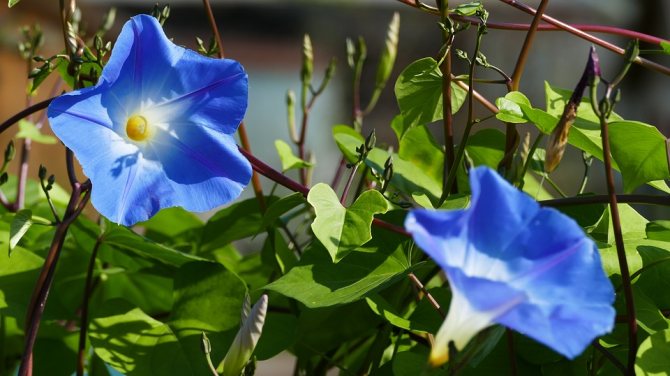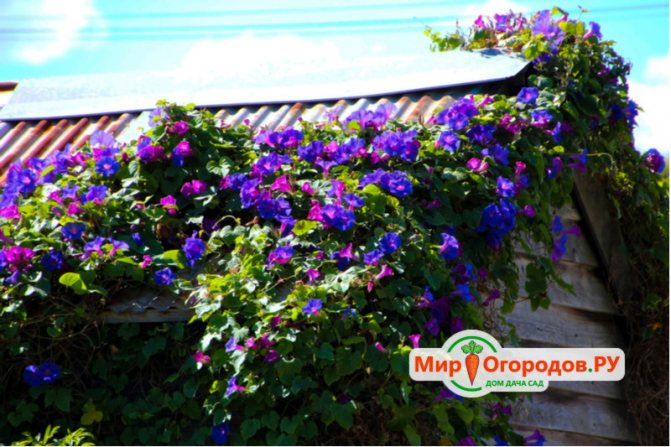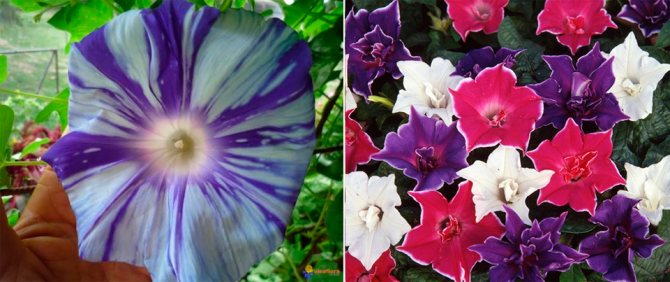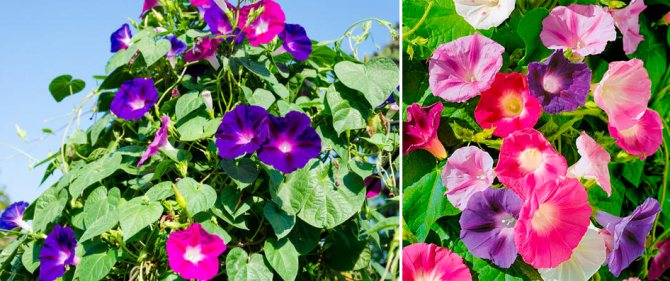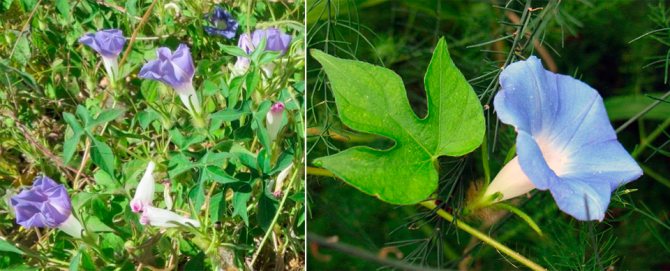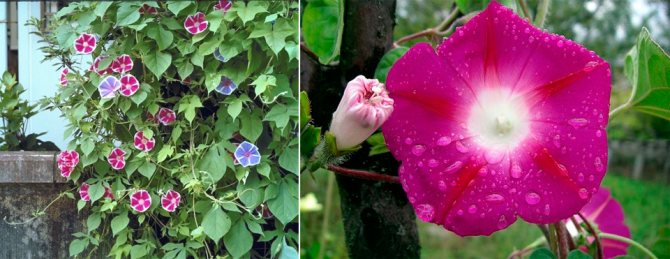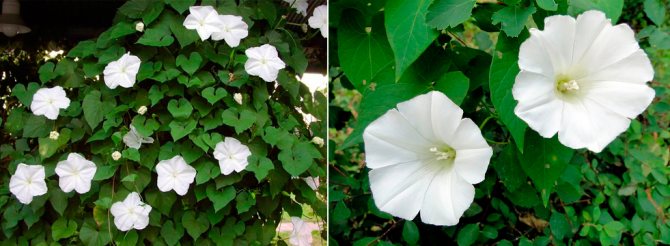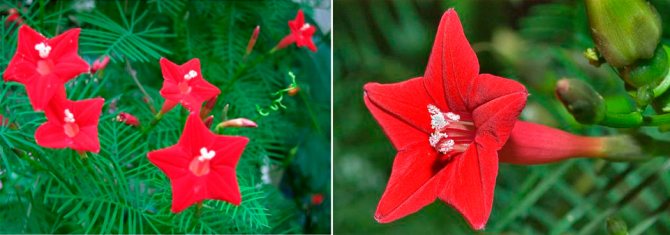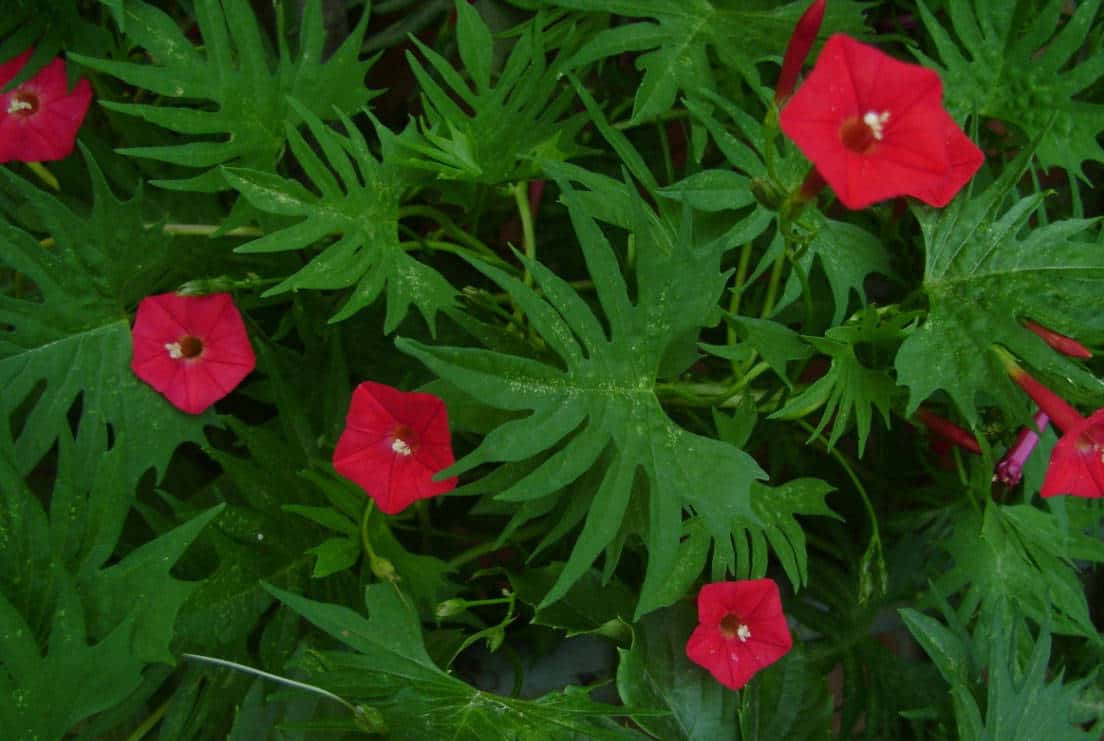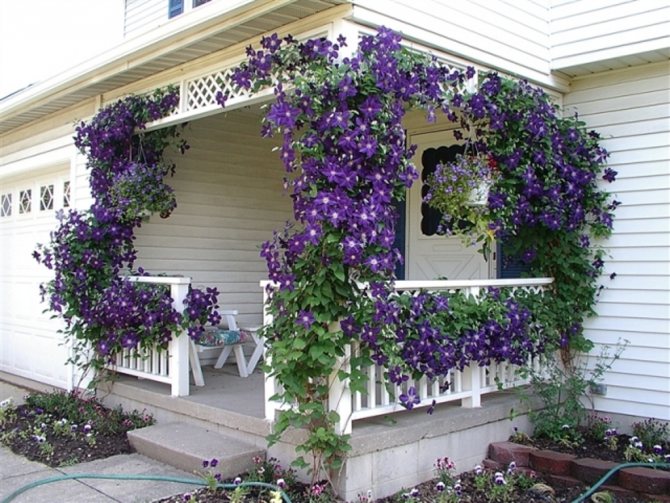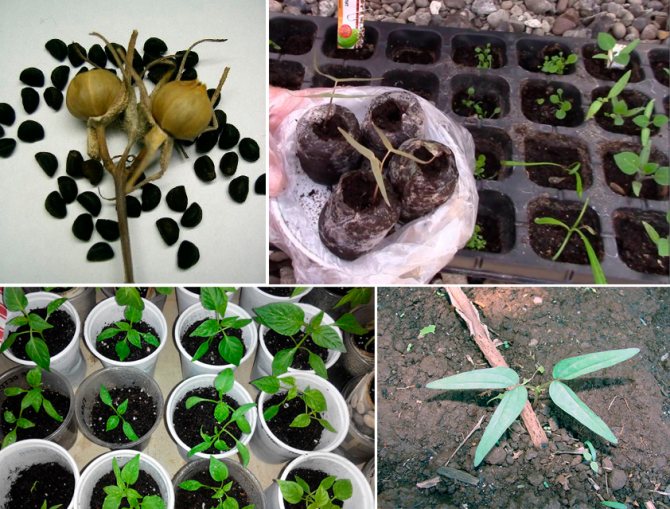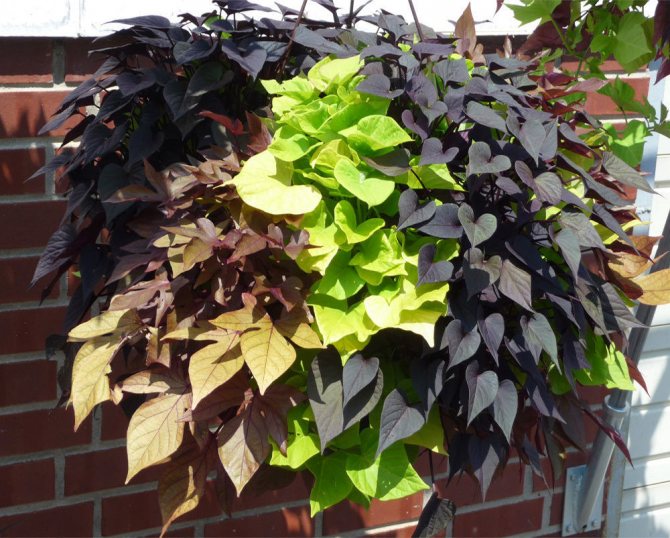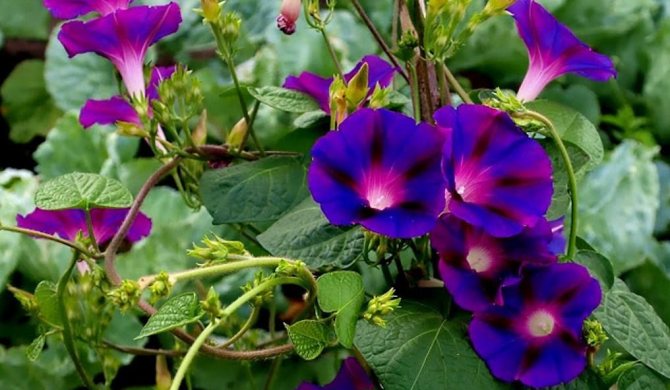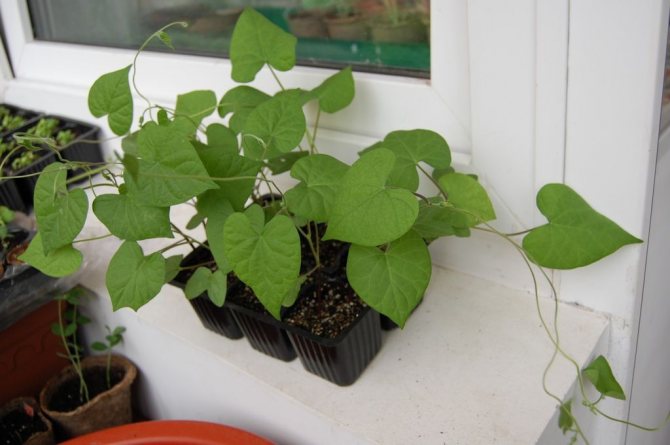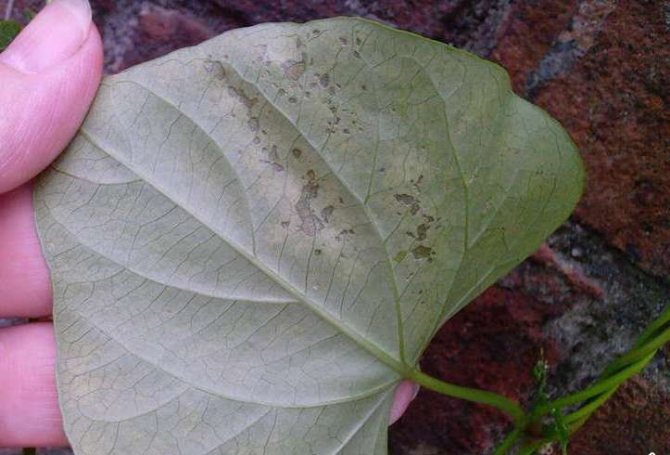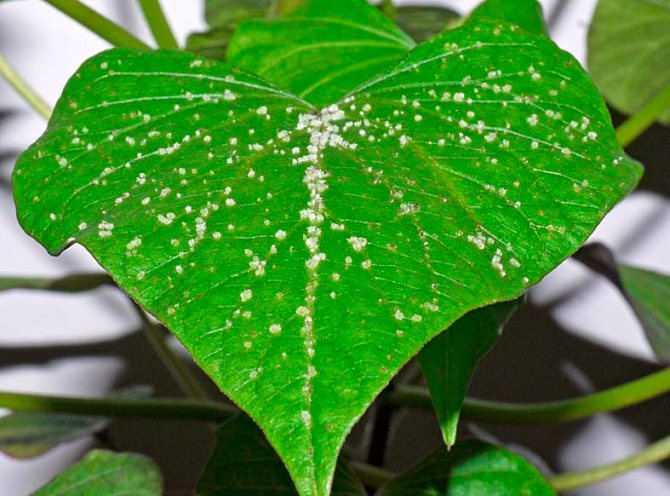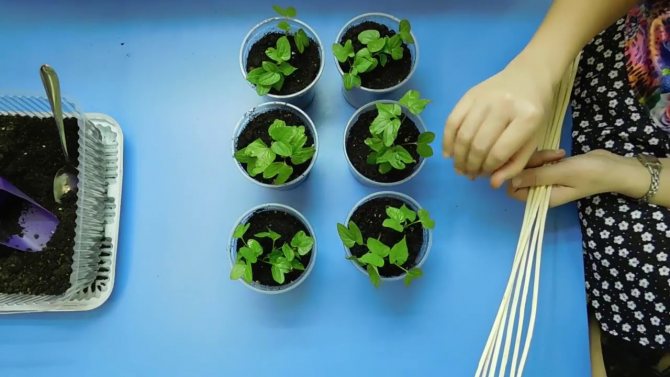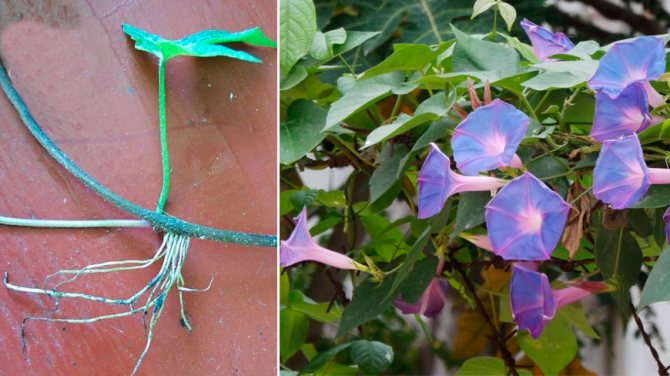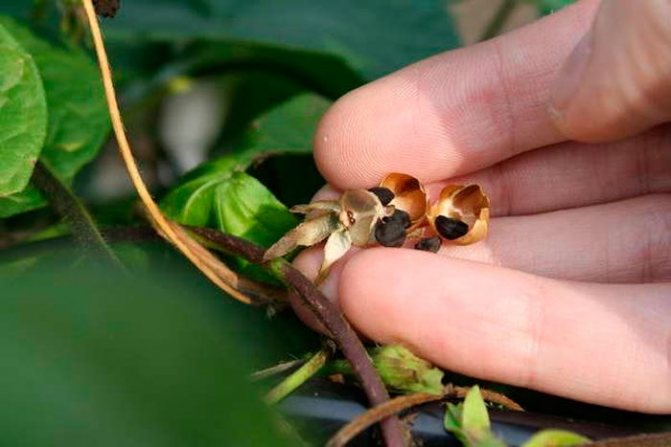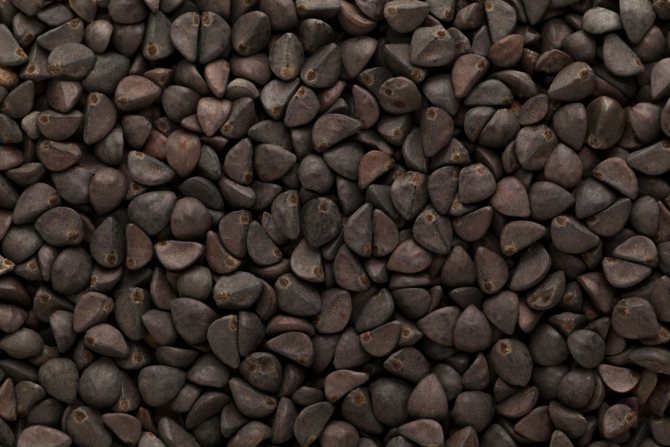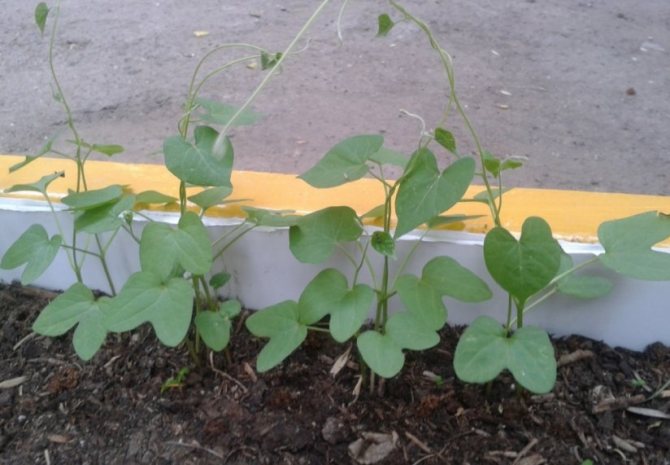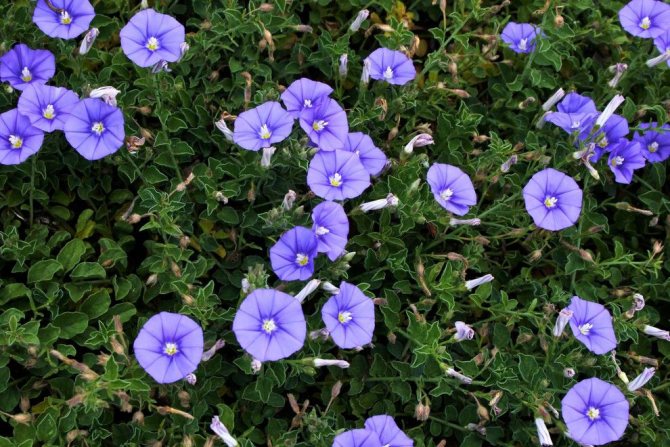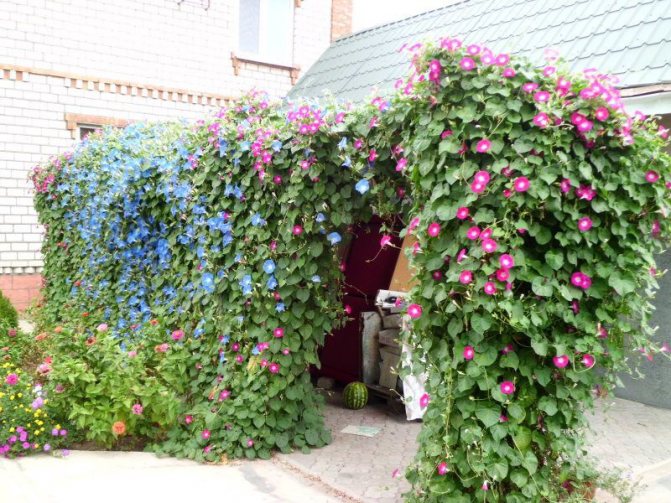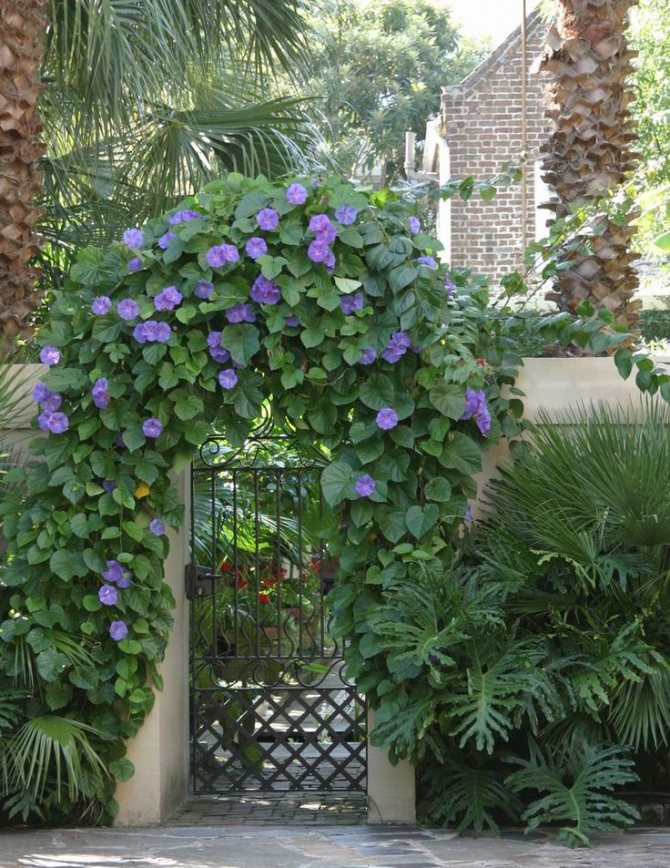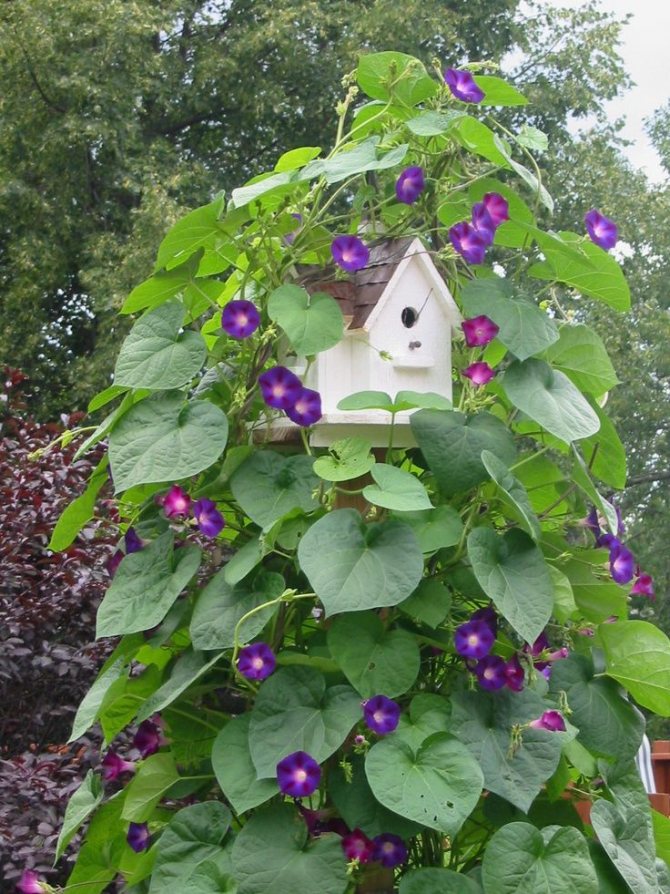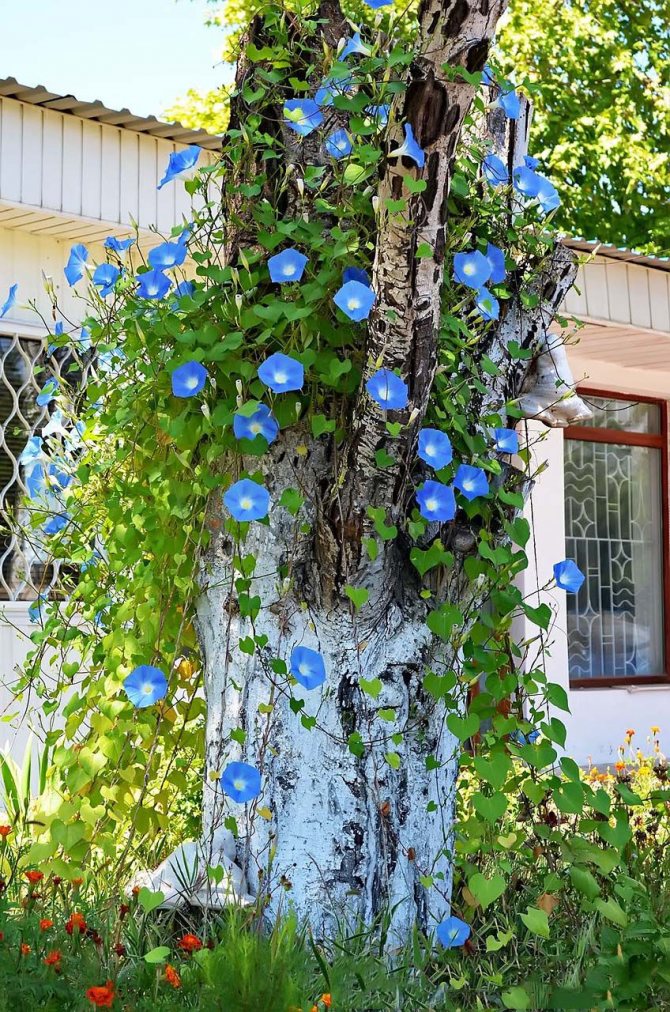Category: Garden Plants
Ipomoea loach wrapped a bucket in a well during the night. Do not tear the fleeting beauty ?! I'll go to the neighbors for water to wash my face. Matsuo Basho
Which plant will help you make your garden gazebo more cozy and beautiful? Or camouflage the shabby barn walls? Or hide the unpainted balcony railings from your eyes? Of course, it should be a vine. And it is better that it bloom with beautiful flowers. And so that it was easy to look after her. All these requirements are met by a plant under the exotic and delicate name "morning glory".
- How to grow Ipomoea seedlings and plant them in the garden in time?
- When and how to sow morning glory seeds outdoors?
- How to choose the best place for this vine on your site?
- How to care for the plant during the season?
Read our article and you will know everything you need to know about Ipomoea.
Content
- Listen to the article
- Planting and leaving
- Description
- Growing morning glory from seeds Sowing seeds
- Seedling care
- When to plant
- How to care
- Ipomoea cairica (Ipomoea cairica)
Morning glory in landscape design + photo
The bindweed is widely used in landscape design, with the help of morning glory, flower beds, various buildings, hedges, fences and walls of houses are decorated.
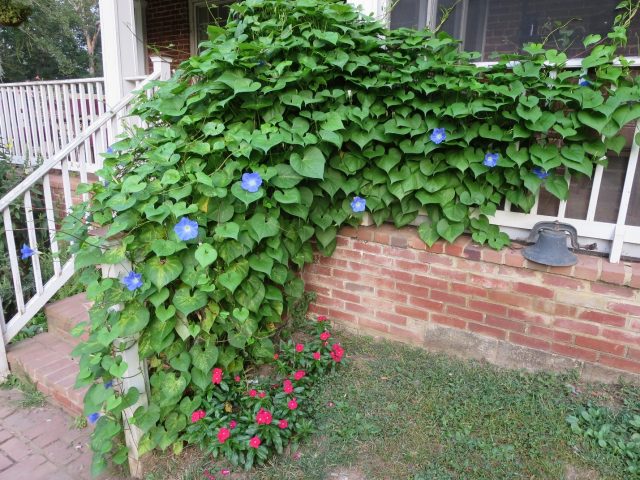
An excellent option would be to grow morning glory outdoors in a pot or hanging planter.


Ipomoea also looks interesting on the fence.


If you plant a bindweed next to another tree, over time it will beautifully braid the branches and trunk.
Advice! Different varieties with flowers of contrasting shades, planted nearby and braiding one common surface, will look unusual.
After flowering, the dense foliage carpet takes on a yellowish-red hue, which makes the plant look no less attractive.
The species goes well with conifers due to contrast, as well as with other bindweed crops. Planting near particularly valuable fruit trees is not recommended as morning glory can be used as a support.
Planting and caring for morning glory
- Landing: sowing scarified seeds for seedlings in March-April, followed by planting seedlings in the ground in early June. You can sow seeds directly into the ground in May.
- Bloom: from July to October.
- Lighting: bright sunlight.
- The soil: loose, nutritious, limed, not too fertile.
- Watering: regular but moderate.
- Top dressing: twice a month with solutions of mineral fertilizers for cacti or flowering plants.
- Cropping: in September.
- Reproduction: seeds and cuttings.
- Pests: aphids, spider mites.
- Diseases: white rust, anthracnose, root, stem, soft or black rot.
Read more about growing morning glory below
This haiku by the Japanese Basho is dedicated to the plant Ipomoea, or farbitis. Ipomoea (lat.Ipomoea) - a genus of flowering plants, the most numerous of the Bindweed family, numbering more than five hundred species.Its representatives are found in tropical and subtropical regions of the world and are both perennial and annual plants - shrubs, trees and vines. There are among the plants of the genus morning glory and food crops - sweet potato and aquatic spinach. The name "morning glory" comes from two Greek words: "ips" - a worm and "homoios" - similar, that is, "worm-like", and this definition refers to the rhizome of perennials of the genus morning glory.
In floriculture, vines of this genus are used, the flowers of which open in the morning before all other flowers, for which the morning glory is called the "flower of the morning dawn." It is difficult to imagine that the field bindweed, the nightmare of farmers, is a close relative of the luxurious morning glory, an ornamental plant so popular among flower growers and gardeners.
- How you can cut roses (video)
Diseases and pests
In general, the disease resistance of morning glory is high. However, if agricultural technology is not followed (severe waterlogging of the soil), the plant can be affected by fungal diseases: powdery mildew, rust, various rot, white edema, etc.
When such problems arise, first of all, reduce watering. For the treatment of plants from fungal diseases, they are treated with fungicides (Topaz, Skor, Strobi, etc.). Deep spraying of the whole plant is carried out in the morning, dry, calm weather.
Also, morning glory can be affected by a viral infection or physiological diseases. It is impossible to get rid of them, diseased plants are removed entirely and burned.
Harmful insects such as aphids and spider mites can severely damage the morning glory. In the fight against aphids, plants are sprayed with insecticides (Aktara, Iskra, Tanrek, Biotlin, Fitoverm, etc.). Acaricides are used against the tick (Fufanon, Bi-52, Fitoverm, Kleschevit, etc.). Treatments are carried out at least 2 times, with a frequency of 1 time in 14 days.
In order for the plant to receive less stress during processing from diseases and pests, tank mixtures are prepared, i.e. mix fungicides and insecticides, but before mixing the preparations, it is necessary to check them for compatibility.
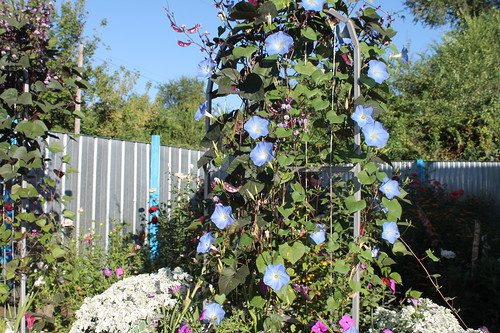

Morning glory flower - description
The morning glory plant growing in our gardens is the garden morning glory, a liana, sometimes reaching a length of five meters. Stems are densely leafy, heart-shaped. Large fragrant flowers on long stalks, abundantly covering the stems, open early in the morning and turn to follow the sun until they close at noon, although on a cloudy day they close only in the evening. Ipomoea flowers, simple or double, resemble a gramophone trumpet in shape, their colors are for every taste: white, red, pink, blue ...
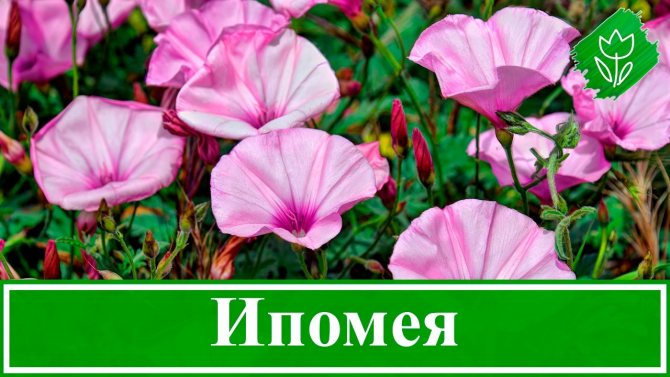

Morning glory blooms from early summer to frost. Perennial in tropical latitudes, morning glory is grown in our gardens as an annual.
Growing morning glory from seeds
Ipomoea from seed - sowing
Morning glory is propagated by seeds that remain viable for three to four years after harvest. Ipomoea seeds are sown into the substrate in mid-May, but they are preliminarily scarified (the integrity of the shell is violated) or simply soaked for a day in 25-30 ºC water for swelling. If the seeds do not swell, their shell must be pierced with a needle and soaked again.
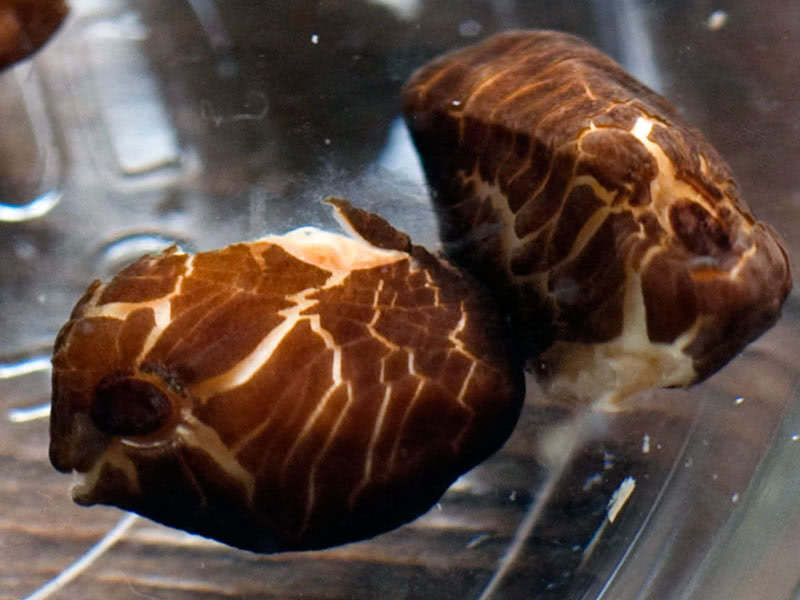

Particular attention should be paid to the composition of the soil, and this is where difficulties arise, since each species needs a specific substrate. Species of African origin prefer soil for succulent plants with the addition of fine expanded clay, such soil will not work for American varieties, and you will have to make a mixture of two parts of leaf humus for them, adding one part of peat, vermiculite, coke fiber and half a part of fine expanded clay to it.
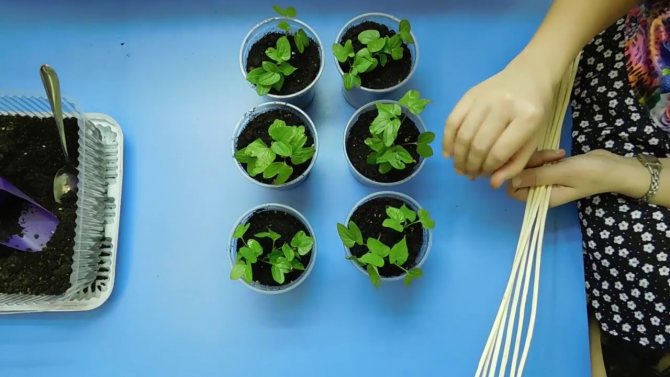

The seeds are planted in small cups with a substrate, two to four in each and covered with glass or film to make a greenhouse. Water the soil as needed, ventilate, remove condensation, observe the 18-20-degree temperature regime, and seedlings will appear in 10-12 days.
Ipomoea seedlings
When the seedlings grow up to 15 cm in height, a string is tied to the base of the sprout, the other end of which is pulled up and fixed: the growing loach will climb along this guide. As the seedlings grow, it will have to be moved once or twice to a large container by transshipment, so as not to damage or expose the roots. If you want to get more side shoots, you need to pinch the seedlings.
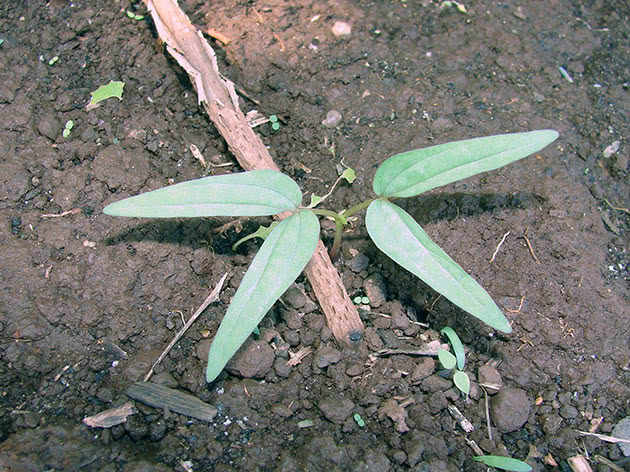

Reproduction
Morning glory reproduces by seeds. They can be sown directly into open ground. This planting justifies itself by good germination and rapid growth. When growing in seedlings, the morning glory will begin the flowering period earlier.
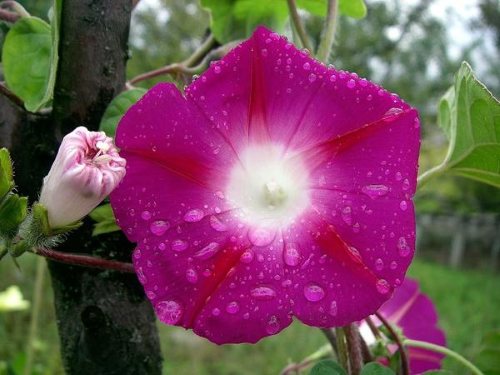

Purple
Sowing seeds in a flower bed is started in spring when the weather is warm, the optimal time is the beginning of May. If young shoots still damage subzero temperatures, then the plant will not be able to gain splendor.
In order for the seeds to sprout faster, the integrity of the shell must be broken. To do this, they are poured with water at a temperature of t = 50 ° and kept until the water cools down.
In the fall, when digging a site, fertilizers with a high phosphorus content are laid. The holes are made with an interval of at least 25 cm, in which 2-3 previously soaked seeds are placed. The embedding of seeds should not be deep. 2-3 cm is enough, otherwise you will have to wait for shoots for a long time. After seed germination, the soil is constantly kept moist. You can use a spray gun to avoid scouring the ground.
The growth of young shoots is accelerated by a small support near each bush, along which the stem will curl.
Growing seedlings
When planted in mid-March-early April, the seedlings will have time to get stronger by the beginning of May. Before planting seeds in pots, they are kept in water for 24 hours until they swell. Non-swollen seeds should be pierced with a needle and left for another day. It will take about 5-10 days for seedlings to germinate, depending on the variety. The temperature for young gatherings is maintained at + 18-20 °.
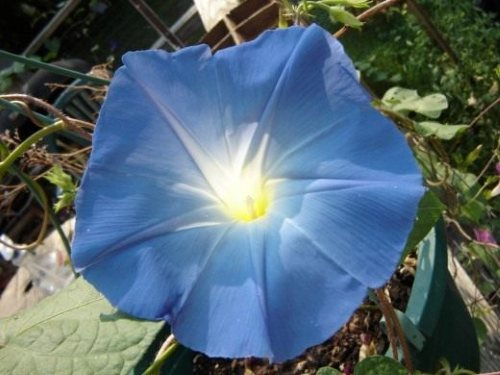

Blue
Seedlings are dived several times until they are planted in open ground. At the same time, the earthen ball must remain intact, otherwise the plant will not take root well. The best time for planting seedlings in the garden is the end of May-beginning of June.
When growing through seedlings, you need to ensure that the seedlings do not outgrow until the moment of planting, otherwise it will not take root well. The place for replanting young plants should be protected from the wind with a pre-installed support.
Ipomoea planting
When to plant morning glory
Planting in the open ground of grown Ipomoea seedlings is carried out in late May or early June. At this time, the soil has already warmed up and you can not be afraid of night frosts, which could destroy the young liana.
How to plant morning glory
Young shoots are transplanted by transshipment at a distance of 20 cm from each other and a support is immediately installed over them: it can be a lattice of twigs or a stretched fishing line.
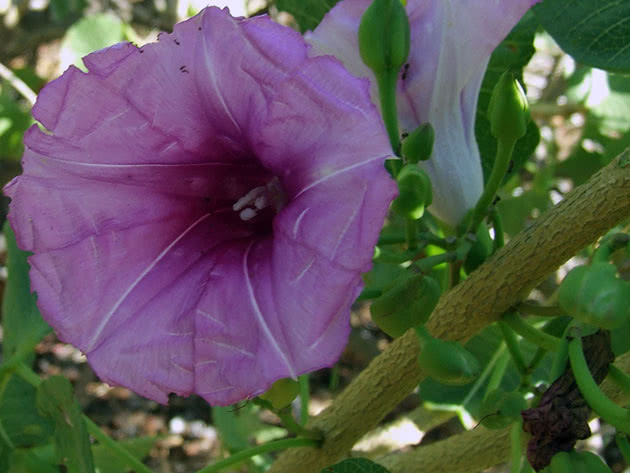

You can sow seeds directly into open ground, bypassing the seedling period. They do this at the end of May after frosts, choosing a sunny and calm area for planting. Morning glory prefers slightly acidic soil and requires good drainage. Whichever method of planting you choose, be careful, because morning glory is very poisonous. That is why it is grown outdoors.
Where can I plant morning glory kvamoklit ↑
- Twinkling Stars are ideal for disguising unattractive walls and fences.
- They can be grown in containers on the veranda or balcony so that they wrap nicely around the railing. If you pull the ropes up to the ceiling, you get a green shady corner.
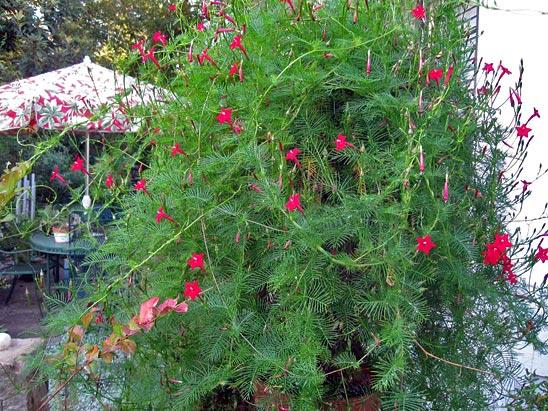

- Another good idea is to plant kvamoklit next to tall trellises or make a stretched wire netting to separate the rest area from the vegetable garden, for example. Open most of the day, colorful buds and lovely leaves will create a truly paradise.
- If you plant them under a tree, the vine will wrap around it beautifully.
Morning glory care
How to care for morning glory
It is simple to care for the morning glory: water regularly, but in moderation, so that no stagnation of water forms in the roots: from May to August - without waiting for the earth to dry out, and from September - after the soil dries up.
Fertilize during the period of active growth every 2-3 weeks with fertilizer for decorative flowering plants or for cacti. However, an excess of fertilizers, especially nitrogen-containing ones, can lead to intensive foliage formation, but at the same time the morning glory does not bloom, so it is important to observe the measure when feeding. The fertilizer concentration should be the same as for indoor plants.
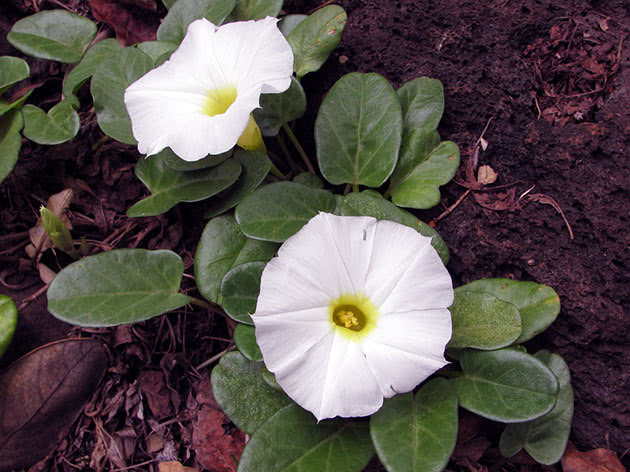

From time to time, morning glory needs pruning: you need to remove damaged or diseased-looking shoots, it is best to prune the vine in September, putting the plant in order before the dormant period. In the spring, pruning is carried out to thin out the bush, leaving no more than three stems in each. Sometimes it is necessary to thin out the morning glory during the growing season.
Propagation of morning glory by cuttings
Some types of morning glory are propagated vegetatively, using cuttings. For example, Ipomoea sweet potato. Cuttings of 15-20 cm long with two internodes are cut from the cut shoots, and the lower cut should run at an angle of 45º 15 mm below the node. After removing the leaves from the bottom, the cuttings are placed in water.
- Methods for propagating roses by cuttings (video)
How to grow a delicious sweet potato in our gardens - detailed instructions
Roots appear very quickly, in 3-5 days, and the shoots can be transplanted directly into the ground and grown at a temperature of 20-25 ºC. Full rooting in the ground occurs within a week. Terms of rooting cuttings: March-April - rooting of green cuttings, in summer - rooting of both green and semi-freshened cuttings.
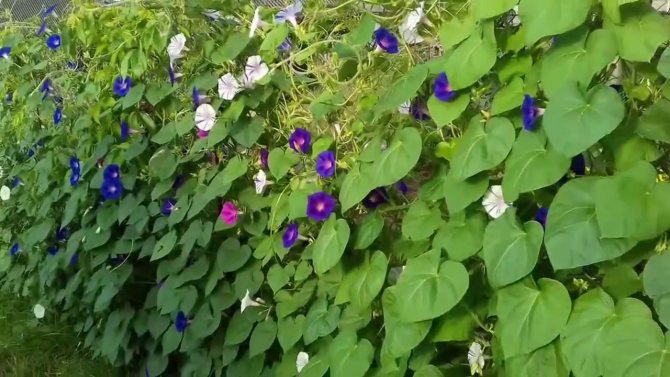

Ipomoea pests and diseases
Among the diseases of morning glory are fungal diseases (white rust, anthracnose, different types of rot - root, stem, black, soft), viral diseases (about twenty different viruses) and the physiological disease white edema.
With fungal diseases, the plant is usually infected through the soil, especially with chronic waterlogging. Some fungal diseases can be cured by removing the rotted spots and treating the morning glory with a fungicide, but ailments such as soft, root and stem rot are not cured, so the specimens infected with them must be destroyed.
Viral diseases are also not amenable to treatment: affected plants must be burned so as not to infect healthy ones.
White edema is not an infectious disease, in addition, only plants grown in a greenhouse or in an apartment suffer from it. It occurs when too frequent watering is superimposed on high air humidity and too low temperature and is expressed in the appearance of blisters and cones on the leaves, which gradually turn brown from green and yellowish. Soon the leaves turn yellow and fall off. Try to follow the agrotechnical rules for growing morning glory, and this problem simply will not arise.
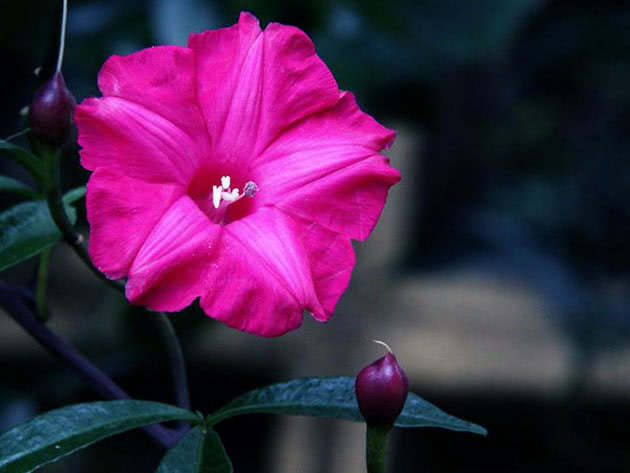

Of the pests, the main enemies of the morning glory are aphids and spider mites. You can get rid of aphids by treating the plant with soapy water, and the spider mite is afraid of spraying with cold water, but these methods work if you find uninvited guests right away. If they have become accustomed and settled down, then both aphids and spider mites will have to be dealt with with a systemic insecticide such as Akarin, Karbofos, Fitoverma or Aktellik.
Growing conditions
Morning glory is considered a heat-loving plant. If in the summertime it is taken out onto the balcony, then it is necessary to protect the plants from sudden changes in temperature day and night, as well as from the effects of rain and wind.
All species in natural conditions require a warm dormant period and dry air.
In an apartment growing environment, with a decrease in natural light and a decrease in temperature on the windowsill, it will be important to reduce watering. The minimum temperature should not fall below 12 degrees.
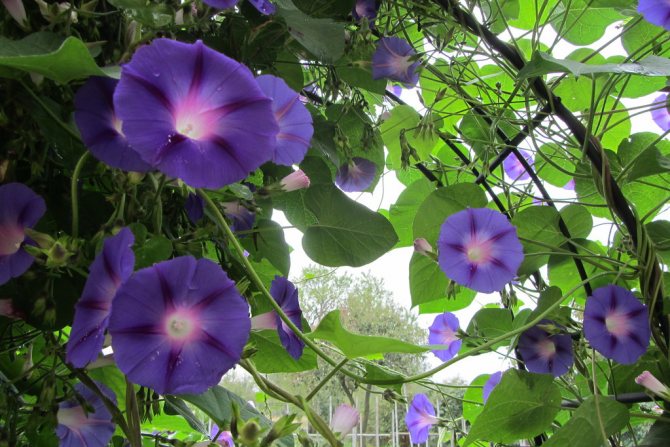

Lighting requirements:
- Bright location;
- A small amount of direct sunlight (ultraviolet radiation);
- A little shade at midday is a must.
African species of morning glory must be gradually accustomed to sunlight in the spring as they adapt very quickly to darkening. Despite the fact that in nature, this plant feels good in full sun.
If you notice that, in addition to the lack of flowering, the color of the leaves began to acquire a more light green shade, then this may indicate a lack of lighting. Then an additional light source is required.
How to collect morning glory seeds
When to collect morning glory seeds
Experts recommend collecting seeds from the second and third buds. When the flowers wither and a brown box forms in their place, let it dry and open slightly. This will happen in about a month. Pour the seeds from the box into a paper bag and write the name of the variety on it. As already mentioned, the seeds of morning glory retain germination for three to four years.
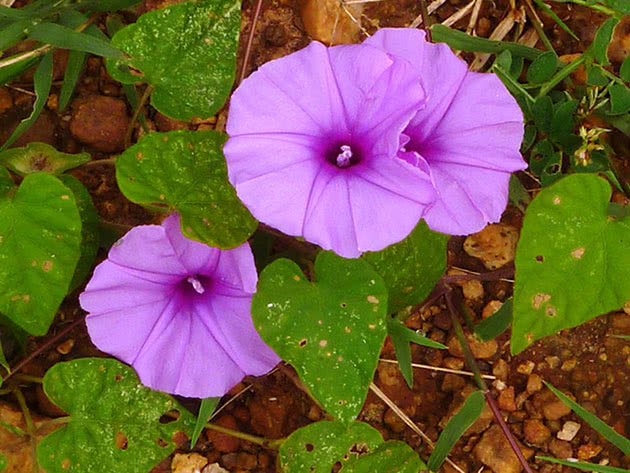

Morning glory after flowering
Morning glory in winter
Ipomoea is grown in our latitudes as an annual, so in the fall, when the leaves fade and fall off, you can cut off the stems of the morning glory, dig up the ground by removing the rhizome. Next spring you will sow the seeds and you will have a new morning glory.
Or it may happen that you do not have to sow seeds, since morning glory reproduces well by self-sowing, and if seeds from ripe bolls woke up in the place where it grew this year, then it is likely that next year they will begin to grow in this place young shoots of morning glory.
Types and varieties of morning glory
Of the more than 500 species of morning glory, only 25 are grown in culture. Let's briefly describe the most popular of them.
Ipomoea cairica (Ipomoea cairica)
It comes from Asia and Australia, its shoots grow up to 5 m long. They are so densely covered with blue flowers that the morning glory looks like a real carpet. The leaves are lobed, palm-shaped, carved.
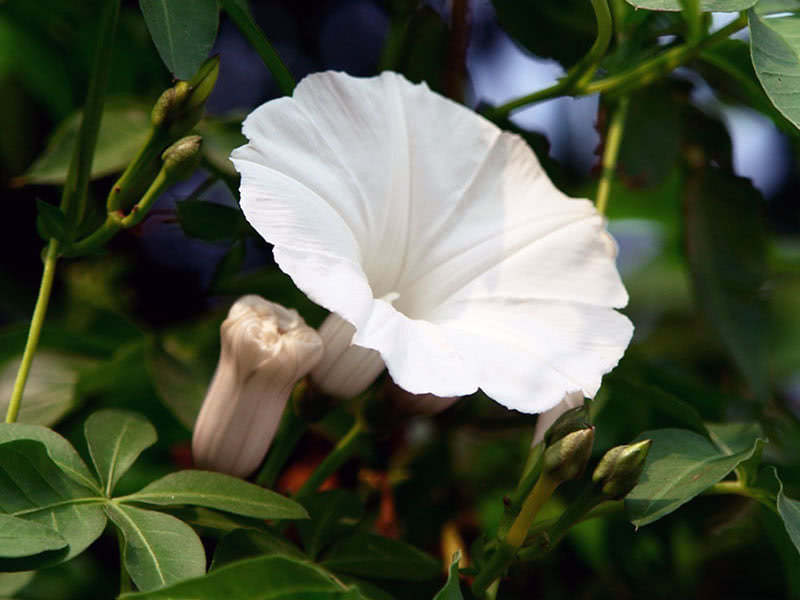

In the photo: Ipomoea cairica (Ipomoea cairica)
Purple morning glory (Ipomoea purpurea)
An annual liana, the pubescent stem of which reaches 8 meters. Leaves glabrous, oval or lanceolate, opposite. Single red, dark purple, purple, blue, white or pink gramophone flowers up to 7 cm long. There are varieties with variegated and even double flowers. The tropical belt of America is considered the homeland of purple morning glory. Varieties: Starfish, Scarlett O'Hara, Nochka, Giselle.
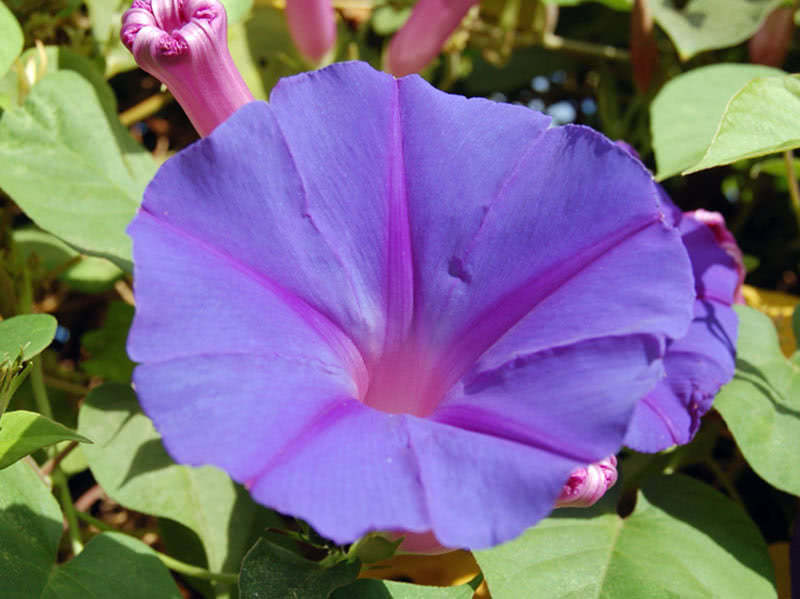

In the photo: Ipomoea purpurea
Ipomoea Nil (Ipomoea nil, Ipomoea Іmperialis)
Or in Japanese asagao (morning face) - strongly branched annual liana up to 3 m long. Leaves are large, broadly oval, opposite, long-petiolate, dark green in color. Funnel-shaped flowers of red, pale or dark blue, pink or purple in color up to 10 cm in diameter. This morning glory blooms from mid-summer to October. Varieties: semi-double Pikoti of blue or red color with white edging, hybrid Serenade - double corrugated flowers of dark red or lilac color 8 cm in diameter.
- Methods for propagating roses by cuttings (video)
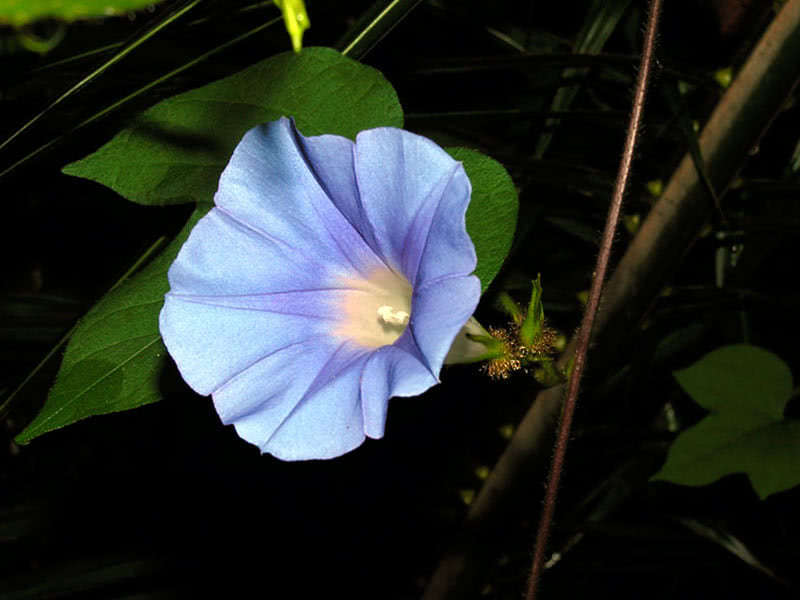

In the photo: Ipomoea Nil (Ipomoea nil, Ipomoea Іmperialis)
Ipomoea tricolor (Ipomoea tricolor)
Or morning glory red-blue (Ipomoea rubro-caerulea) - originally from the tropics of America. A perennial used in cultivation as an annual plant. The stem reaches a length of 4-5 m. The leaves are large, opposite, cordate, glabrous, wrinkled, petioles are long. Funnel-shaped flowers 8-10 cm in diameter are collected in bunches of 3-4 pieces: pale blue with a white tube, but when they fade, they turn pink-purple. This morning glory blooms from early June to the first frost.
Some varieties contain psychotropic substances used in medicine. Popular varieties in floriculture: Pink lollipop, Blue star, Sky blue, Flying saucer.
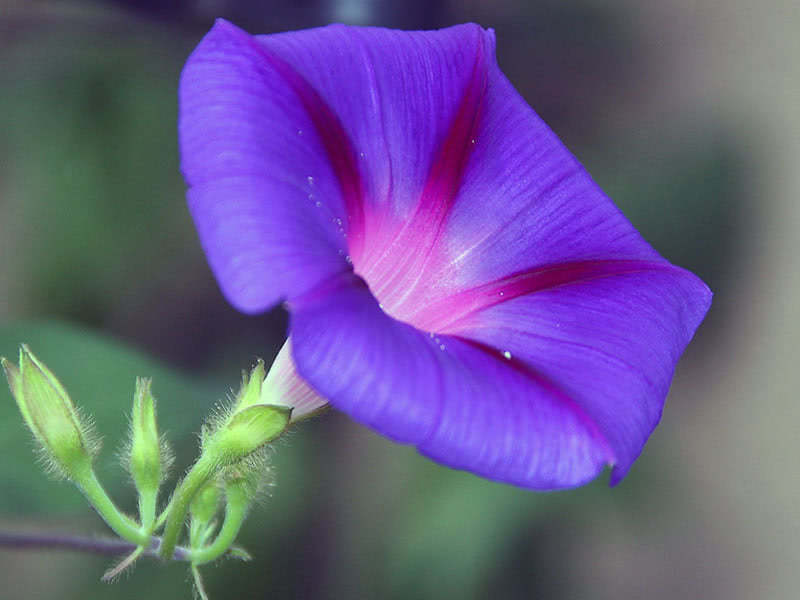

Photo: Ipomoea tricolor (Ipomoea tricolor)
Ipomoea ivy (Ipomoea hederacea)
Annual liana from the American tropics. The branched stem reaches a length of 2-3 meters, the leaves are large, heart-shaped, three-lobed, similar to ivy leaves.Funnel-shaped flowers with a diameter of about 5 cm are usually sky blue, sometimes with a white border, but there are red, burgundy, pink. They are collected two or three on a long peduncle. Bloom from July to mid-autumn. Roman Candy variety with variegated white-green leaves is grown even as an ampelous plant.
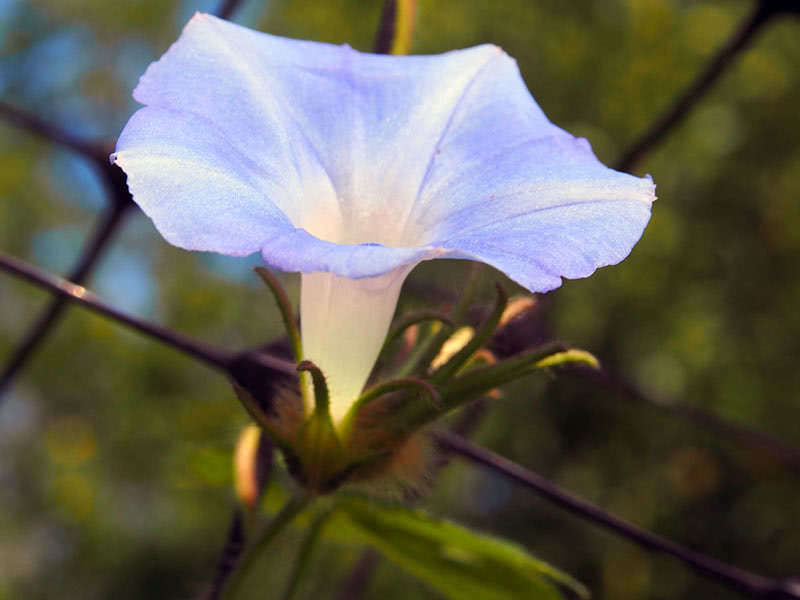

In the photo: Ipomoea ivy (Ipomoea hederacea)
Moonflower morning glory (Ipomoea noctiflora)
Also from tropical America. The stem is up to 3 m long, the shoots are up to 6 m, large leaves are heart-shaped, fragrant white flowers are also large - up to 10 cm, open at night and close with the first rays of the sun, and those unfamiliar with this mystery of the lunar-flowering farbitis ask why their morning glory does not bloom. But on a cloudy day, the flowers close only in the evening, and you can appreciate their amazing delicate beauty. This morning glory blooms from July-August to October.
Use in landscaping and combination with other plants
Of course, morning glory is used for vertical gardening. Secluded corners of the garden, gazebos entwined with a plant, not only decorate, but also give shade on a hot summer day. Plants wrap around arches and pergolas beautifully. Perfectly decorate outbuildings and fences.
Morning glory sweet potato looks spectacular both on the support and on the veranda in hanging baskets, 3-4 plants are planted in each.
Morning glory is a self-sufficient culture, it can be grown without neighbors. But it goes well with climbing rose, with clematis, with nasturtium.
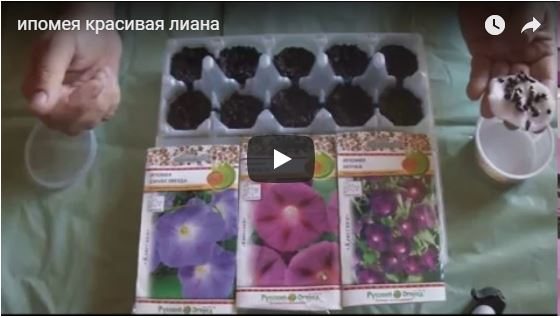

Photo credits: yu.cuimow, Lencha, Lastochka, Tatiana and Alexander, mel-margarita, Kubanochka, swet.m2011, svets07, Elena_G, Helen, Nelly, AntoNina, Ka-Valentina-48, @id, valentina.myschevsckaya.


